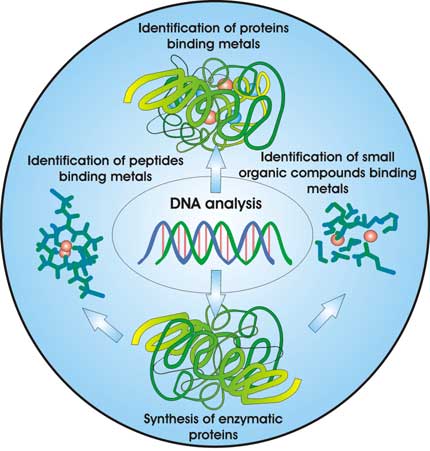Identification of bioligands chelating metals
Determination of metals in plant organs and organelles
Biotechnology transforms world agriculture, adding new traits to crop plants at a greatly accelerated rate. Plants are becoming more efficient producers of food, fiber, medicines, and construction materials. In addition to these conventional uses, biotechnology opens doors to unique uses of plants that are gaining greater acceptance from the public and attention from the scientific community. These so-called „value-added” uses include phytoremediation, the use of plants to remove pollutants from the environment or to render them harmless.
Metal phytoextraction relies on metal-accumulating plants able to transport and concentrate polluting metals, such as lead, uranium and cadmium from the soil into the harvestable aboveground shoots. Chelate-assisted phytoextraction has been successfully used to remove lead from contaminated soils using specially selected varieties of Indian mustard (Brassica juncea L.). These varieties combine high shoot biomass with the enhanced ability of roots to absorb EDTA-chelated lead from soil solution and transport it into the shoots. Metal phytostabilisation relies on metal accumulating plants able to accumulate high amount of polluting metals in roots which cannot actively circulate in the environment.
The strategy to identify cadmium deactivation mechanism in Arabidopsis thaliana has been developed using selective and sensitive hyphenated techniques. Speciation of the metal complexes in cells was investigated in cells by SEC – ICP MS in order to uncover the accumulation process. Phytochelatins, desglycyl-phytochelatins and phytochelatins homologues lacking the N-terminal γ-linked glutamic acid are extracted from examined plant and are identified by RPLC – ESI MS. Two-dimensional chromatography allows to link the metal complexes separated by SEC with isoforms of phytochelatins analyzed by high resolution RPLC and confirm their significant responsibility for metal accumulation. The potential of the cadmium complexes speciation indicates that obtained results could be reliable source of knowledge to confirm the information coming from the well known genomic sequence of Arabidopsis and to uncover the role of γ-Glutamyl transpeptidase in metabolism of glutathione.
General strategy for characterisation of metal deactivation mechanisms in plants


